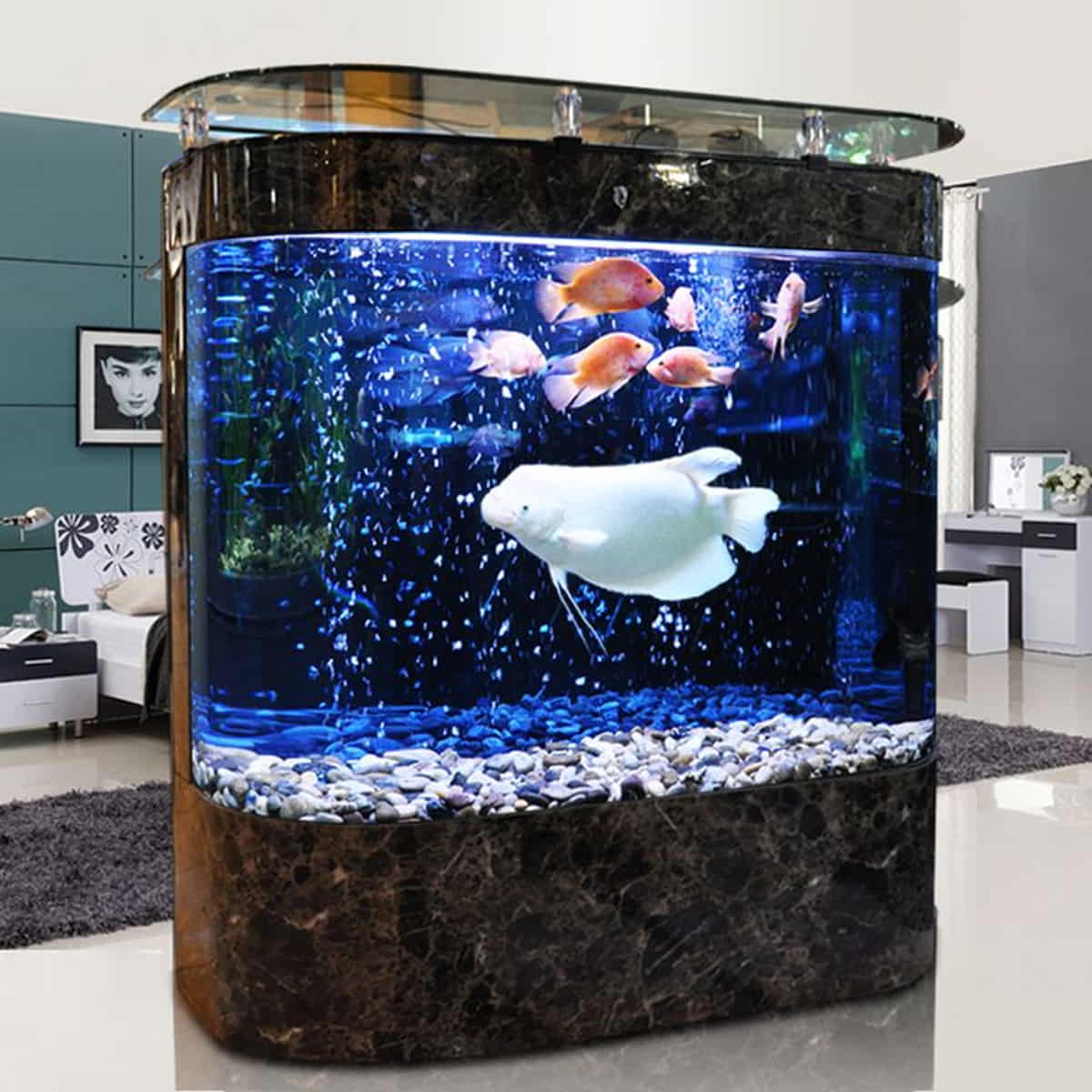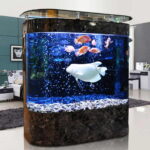Maintaining a marine aquarium can be a rewarding yet challenging endeavor that requires dedication, knowledge, and a passion for the aquatic world. Whether you’re a seasoned aquarist or a beginner, understanding the intricacies of marine aquarium maintenance is crucial for the well-being of your underwater ecosystem.
In this comprehensive guide, we will delve into the essential aspects of how to maintain a marine aquarium successfully. From water parameters to equipment care, let’s embark on a journey to ensure your marine aquarium not only survives but thrives.
Creating the Ideal Environment To Maintain a Marine Aquarium
To maintain a healthy marine aquarium, creating an environment that closely mimics the natural conditions of the ocean is paramount. Begin by establishing the appropriate water parameters, including temperature, salinity, and pH levels.
Setting the Right Temperature
Maintaining a stable temperature is vital for the well-being of marine life in your aquarium. Most marine organisms thrive within a range of 75-82°F (24-28°C).
Invest in a reliable aquarium heater and thermometer to ensure consistent temperature levels. Check and calibrate these devices regularly to avoid fluctuations that can stress your marine inhabitants.
Salinity Matters
Marine aquariums require a specific salinity level, typically ranging from 1.023 to 1.025. Regularly test and adjust the salinity using a hydrometer or refractometer. Additionally, ensure that the salt mix you use is of high quality and suitable for marine aquariums.
Balancing pH Levels
Maintain the pH levels of your aquarium water between 8.1 and 8.4, as this range is conducive to the health of marine life. Regularly test the pH using a reliable kit and make adjustments as necessary, using pH buffers designed for marine aquariums.
Filtration and Water Circulation To Maintain a Marine Aquarium
Effective filtration and water circulation are essential components of a well-maintained marine aquarium. Proper filtration helps remove impurities, while adequate water circulation ensures a uniform distribution of nutrients and oxygen.
Choosing the Right Filtration System
Selecting an appropriate filtration system is crucial for maintaining water quality. A combination of mechanical, chemical, and biological filtration methods is often recommended.
Regularly clean or replace filter media to prevent the accumulation of debris that could compromise water quality.
Water Circulation for Oxygenation
Marine organisms rely on adequate oxygen levels for their well-being. Invest in a quality water pump to ensure proper water circulation, preventing dead spots where oxygen may be lacking.
Aim for a turnover rate of at least 10-20 times the total tank volume per hour to promote oxygen exchange.
Lighting and Photosynthesis To Maintain a Marine Aquarium
In a marine aquarium, proper lighting is not just for aesthetics; it plays a crucial role in supporting photosynthesis, which is essential for the health of corals and other photosynthetic organisms.
Choosing the Right Aquarium Lighting
Selecting the appropriate lighting system depends on the type of marine life in your aquarium. Reef tanks, for instance, often require high-intensity lighting to support the photosynthetic processes of corals.
LED lights are a popular choice due to their energy efficiency and customizable spectrum.
Regulating Photoperiod To Maintain a Marine Aquarium
Establish a consistent photoperiod to mimic the natural day-night cycle. Most marine aquariums benefit from 10-12 hours of light per day.
Use a timer to automate the lighting schedule, providing a stable environment for photosynthetic organisms while preventing issues such as algae overgrowth.
Regular Maintenance Tasks To Maintain a Marine Aquarium
Consistent and thorough maintenance is key to the long-term success of your marine aquarium. From water changes to equipment checks, staying on top of routine tasks will contribute to a stable and thriving ecosystem.
Regular Water Changes
Performing regular water changes is crucial for removing accumulated waste and replenishing essential trace elements. Aim for a water change of 10-20% every two weeks, adjusting the frequency based on your aquarium’s specific needs.
Use high-quality synthetic sea salt mix for optimal results.
Equipment Checks and Cleaning To Maintain a Marine Aquarium
Regularly inspect and clean your aquarium equipment, including pumps, skimmers, and heaters. Remove any debris or algae that may hinder their performance.
Ensure that all equipment is functioning correctly to prevent disruptions in the aquarium’s ecosystem.
Monitoring Water Parameters
Frequent monitoring of water parameters is a fundamental aspect of marine aquarium maintenance. Test for ammonia, nitrites, nitrates, and other essential parameters using reliable test kits.
Keep a detailed record of your findings to identify any trends or abnormalities, allowing for prompt corrective actions.
Troubleshooting and Problem Resolution
Even with meticulous care, challenges may arise in a marine aquarium. Being able to identify and address potential issues promptly is a testament to your expertise as an aquarist.
Recognizing Signs of Stress or Disease
Regularly observe the behavior and appearance of your marine inhabitants. Unusual behavior, changes in color, or signs of distress could indicate underlying issues.
Promptly quarantine any affected individuals to prevent the spread of disease, and seek advice from a qualified aquarium veterinarian if needed.
Algae Control Strategies To Maintain a Marine Aquarium
Algae growth is a common challenge in marine aquariums. Implement effective strategies such as maintaining nutrient control, adjusting lighting intensity and duration, and introducing algae-eating organisms to keep algae at bay.
Avoid overfeeding, as excess nutrients can contribute to algae proliferation.
Conclusion
In conclusion, mastering the art of maintaining a marine aquarium requires a combination of knowledge, dedication, and practical experience. By creating an ideal environment, ensuring proper filtration and water circulation, managing lighting for photosynthesis, and performing regular maintenance tasks, you can cultivate a thriving underwater ecosystem.
Troubleshooting and addressing challenges as they arise further demonstrate your expertise as a responsible aquarist.
Remember, the key to success lies in consistency and a genuine passion for the well-being of your marine inhabitants.
As you embark on this journey, keep the mantra of “how to maintain a marine aquarium” in mind, guiding you through the intricacies of creating and sustaining a beautiful and healthy marine environment for years to come.
ALSO READ
How to Arrange Sofa and Loveseat in a Small Living Room Easily
How to Fix a Crack in a Glass Table: Restoring Elegance
Decorations for Above the Bed:Elevate Your Space










2 Comments